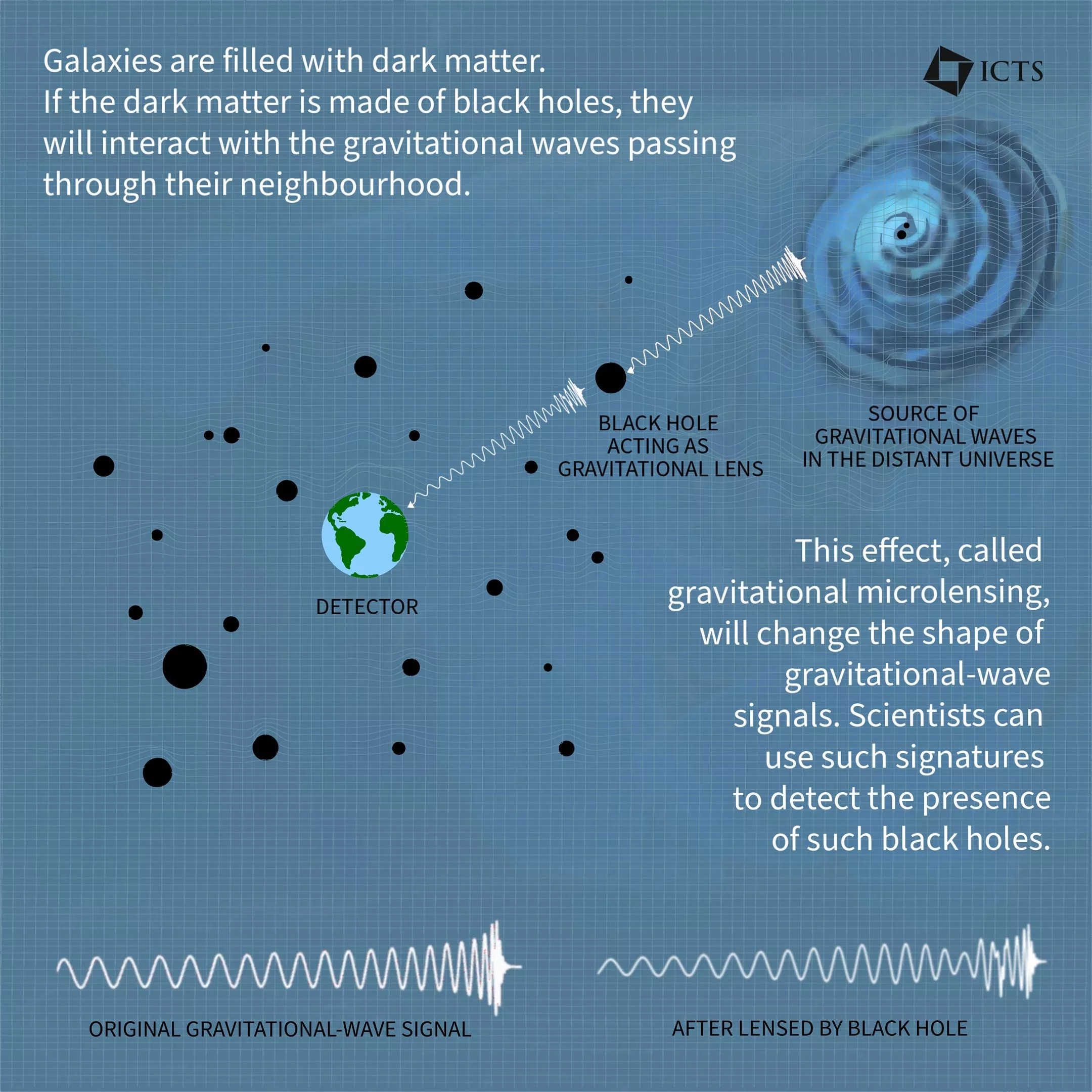One of the biggest puzzles in modern cosmology is the existence of dark matter, which constitutes most of the matter in the universe. A recent study by an international team of scientists used gravitational waves to detect the properties of dark matter The study was recently published in the Astrophysical Journal newsletter. Some astronomical observations have confirmed the existence of dark matter, which only interacts with conventional matter through gravity.
Dark matter does not emit any light, so it avoids direct astronomical observation. The Milky way, including our own, is surrounded by the halo of dark matter, which extends farther than the visible Milky way.
The standard model of particle physics describes all the basic particles that make up all normal matter. Particles not described in the standard model may exist in the universe and may constitute dark matter. Over the past few decades, some large-scale experiments have tried to detect this elusive particle, but failed.
Another possibility is that dark matter consists of a large number of massive and compact objects, such as primitive black holes. This kind of black hole is different from the black hole usually observed by astronomers, which is produced by the death of massive stars. Primitive black holes formed in the early universe and may exist in black holes of various masses. They may be as light as asteroids, or they may weigh trillions of solar masses.
However, astronomers have not made conclusive detection of primitive black holes. In addition, various astronomical observations also restrict the abundance of primitive black holes. For example, such black holes can bend light from distant stars; This phenomenon is called gravitational microlens. So far, although scientists have conducted extensive search, they have not successfully observed the low light level phenomenon produced by this kind of black hole. This means that a black hole much lighter than the sun will cause the micro transmission of starlight. And this is very rare. Even if they exist, they only account for a small part of dark matter. Nevertheless, some other mass black holes are likely to contribute to dark matter.
Microlens of gravitational wave as a new detector of dark matter
Recent observations of gravitational waves have provided astronomers with a new way to observe the universe. Gravitational waves are ripples that travel at the speed of light in space and time. LIGO and Virgo stations in the United States and Italy have observed about 100 gravitational wave signals in the past few years.
According to Einstein's theory, gravitational waves are also bent by massive objects between the source and the observer. If a considerable part of dark matter exists in the form of black holes, they should cause microlens effect in the observed signal. The low light level effect will distort gravitational waves in a way that scientists can accurately calculate. However, the international team could not observe any such distortion in the signals observed by LIGO and Virgo.
The current work is to evaluate how much of the dark matter may be in the form of black holes by using the lens effect not observed in the gravitational wave signal. The mass of a black hole that causes a gravitational wave microlens is much larger than that of a light microlens. Scientists have concluded that less than half of the dark matter may be in the form of black holes with masses ranging from 100 to 100000 solar masses. This is just an upper limit; The actual part may be much smaller.
Future observation ideas
At present, the constraints obtained from gravitational wave lens observation are not so strict compared with those obtained from other astronomical measurements. Other observations, such as the analysis of the cosmic microwave background, tell us that this massive primitive black hole may only contribute a small part of dark matter. However, there are two reasons why scientists can be excited about this method. First, every observation is accompanied by its own error; It is very important for scientists to draw the same conclusion using different observations and experiments. Second, in the near future, gravitational wave observation will be able to provide better constraints.
In the next few years, thousands of gravitational wave signals will be observed by human built detectors such as LIGO and Virgo, and the upcoming detectors such as kagra and LIGO India. If scientists do not observe any characteristics of microlenses in these gravitational wave signals, they will be able to conclude that only a very small part of dark matter may exist in the form of this heavy black hole. On the other hand, if a considerable part of the gravitational wave signal contains the characteristics of lens, it will be strong evidence of the highly sought after primitive black hole. Either way, the microlens of gravitational wave provides a unique way to detect the properties of dark matter.

